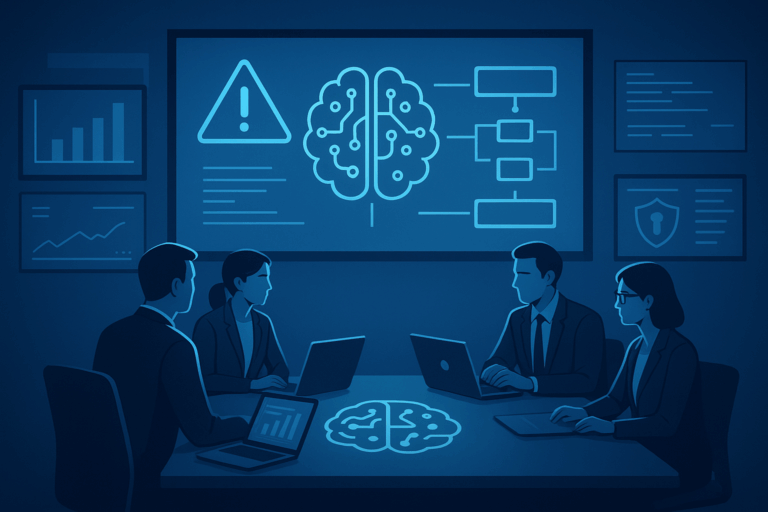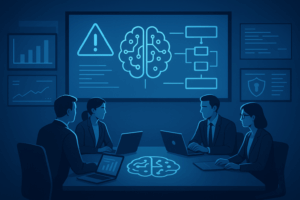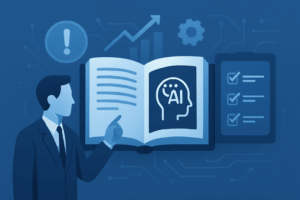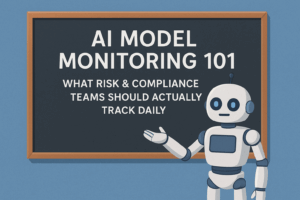AI oversight is only as strong as your ability to respond under pressure. You can have monitoring dashboards, risk registers, and escalation playbooks in place—but if your team has never practiced using them, the first real incident could still spiral out of control.
That’s where AI tabletop exercises come in.
Just as cybersecurity teams run breach simulations, AI risk teams need to simulate failures—bias spikes, model drift, or rogue outputs—before they happen in production. Tabletop exercises transform policies and playbooks from theory into muscle memory.
In this article, we’ll break down:
Why tabletop exercises are essential for AI governance
The core components of a strong simulation
A real-world case study
A practical “how-to” for running your first exercise
Why AI Incident Response Needs Tabletop Exercises
Even the most robust AI escalation playbook (see our guide here) can fall short if teams don’t know how to use it in real time.
Common pitfalls when there’s no practice:
Frozen decision-making: Teams hesitate over who has authority.
Delayed communication: No clear channel to update leadership.
Regulatory blind spots: Compliance obligations aren’t triggered fast enough.
Trust erosion: Customers and employees lose confidence when responses feel chaotic.
A tabletop exercise solves this by testing people, not just processes. It builds readiness, coordination, and confidence—so when the real thing hits, your response is structured, not improvised.
What a Good AI Tabletop Exercise Looks Like
An AI incident simulation should feel realistic, but not overwhelming. It should test key triggers and decision paths without collapsing into chaos.
1. Pick the Scenario
Choose a realistic incident based on your risk profile. Examples:
A bias spike in an HR screening model (suddenly rejecting more women or minority candidates).
Model drift in a financial AI, causing credit scoring accuracy to drop below 90%.
An AI-generated content risk, like a chatbot producing offensive or false statements.
📌 This builds on the triggers we outlined in AI Risk Registers: What to Track, Measure, and Escalate.
2. Define Roles & Escalation Paths
Use your existing AI escalation tiers:
Ops team investigates anomalies.
Risk & compliance evaluates exposure.
Executives decide on public disclosure.
Role clarity is critical—otherwise, people waste time debating ownership.
3. Simulate Communication Channels
Run the exercise using your real communication tools (Slack, Teams, secure email).
Who reports first?
Who gets pulled in at each tier?
How fast does leadership hear about it?
Case Study: When Zillow’s home-buying AI failed, leading to a $500M loss, analysts noted that delayed communication worsened the crisis. A simulation could have surfaced those bottlenecks sooner. (Stanford source).
4. Include Regulators and Audit Triggers
In high-stakes industries like finance or healthcare, escalation often requires notifying regulators.
What conditions trigger mandatory reporting?
How do you prepare documentation in plain language?
📌 As we noted in The Human Oversight Layer, regulators don’t just want technical evidence—they expect human decision accountability.
5. Debrief and Iterate
The most valuable part isn’t the simulation—it’s the post-mortem. Ask:
Did teams know their roles?
Were communication channels effective?
Did escalation thresholds work, or do they need tuning?
What documentation gaps showed up?
Turn every exercise into a feedback loop, updating your playbooks and risk registers accordingly.
Real-World Example: Microsoft Tay
In 2016, Microsoft launched Tay, a Twitter chatbot that was hijacked by users and began producing offensive outputs within hours. The project had to be pulled offline in less than 24 hours. (BBC)
A tabletop exercise could have surfaced:
Trigger points for unacceptable outputs.
Escalation tiers (Ops → Risk → Execs).
Communication protocols for immediate shutdown and public messaging.
Instead, the lack of preparation left Microsoft reactive rather than proactive—costing both reputation and trust.
How to Run Your First AI Tabletop Exercise
Here’s a simple 5-step roadmap:
Pick one high-value AI system (credit scoring, hiring, fraud detection).
Define a trigger event (bias spike, drift, offensive output).
Assemble your escalation team with named roles.
Run the scenario in real-time, using your actual tools.
Hold a post-mortem and update your playbooks.
📌 If you’re unsure where to start, revisit our article on AI Model Monitoring 101 for practical metrics you can use as triggers.
Final Thoughts
An AI incident isn’t a matter of “if”—it’s “when.”
Organizations that treat oversight as a checkbox will find themselves scrambling when a real issue emerges. Those that run tabletop exercises turn their escalation playbooks into action—building resilience, regulatory defensibility, and most importantly, trust.
The best time to practice your AI response is before the crisis hits.




